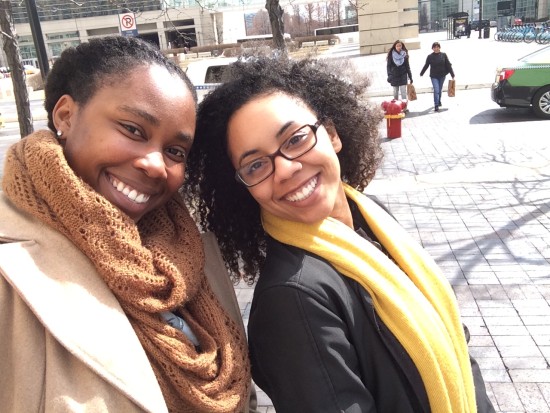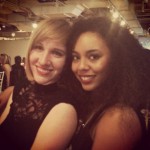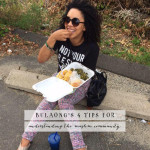As we continue to witness violence against women of color, queer people, transgender people, Black people, and other non-Black people of color, the Color of Violence 4 (COV4) conference in Chicago last month served as a space to be in community and discuss the transformative possibilities of healing and justice.

I attended multiple sessions including “Safetyteams and Safer Hoods: How to Build Safety without Using the Cops,” “Layered and Foundational: Race, Gender, and School as Sites of Violence,” and “Surviving the Mic: A Black Feminist Poetic Dialogue,” just to name a few.
Common themes threaded throughout much of the weekend’s conversation were over-policing, women’s bodies, justice, and healing. Of all the sessions I went to, I want to delve deeper into a particular conversation about reproductive oppression. As many of my friends and even our very own Toni Muñoz-Hunt embark on the journey of motherhood, I’ve started to think more intentionally about how women’s bodies are especially oppressed. In particular, I’d like to discuss how this oppression affects our reproductive rights. As Dr. Melissa Harris Perry said that weekend, “Women’s bodies are fraught terrain for American politics.”

With the recent news of the first woman in the United States convicted of feticide and neglect due to an illegal late-term abortion, the conversation happening in reproductive justice communities is occurring more widely and publicly. In particular, the discussion concerns women of color and poor women because they are more at risk of having their reproductive choices policed and managed by outside entities, including lawmakers, doctors, and partners.
In the session “We Always Resist: Combating Reproductive Oppression in the Black Community,” we generated a list of ways Black women experience reproductive oppression. We defined reproductive oppression as “the control and exploitation of an individual’s body, sexuality, reproduction, and labor.” We agreed all women in some form, but some women more than others, experience it. Our list included:
- Shame: Women are often shamed for choosing not to have children or to have children under circumstances that are deemed “inappropriate” by the status quo and patriarchal norms. That includes women who are shamed for having abortions, single mothers, lesbian parents, and mothers on state assistance.
- Being denied access: Access to choices for medical care, doctors, and healthy foods is often denied. This denial could happen for a myriad of reasons including health insurance, income, immigration status, marital status, and sexual orientation.
- Children are unwanted: Most recently, we have seen the numerous deaths of young Black children and teens, which is a reproductive issue for many Black women. When Black women consider having children in a world that does not value their humanity and a world where their racial categorization means a lower life expectancy rate, it is oppressive and disheartening.
- Demonization and oversexualization of Black bodies: The Kardashians gladly rock surgically enhanced lips, big booties, and cornrows. They’re often praised for their “trendy” looks while Black women have historically been put on display in popular media for their large butts and even shamed for their big lips and “unprofessional” hairstyles.
The list goes on and must also include a deeper conversation about what reproductive oppression looks like for queer people, transwomen, and single mothers.

The core of this conference not only reflected on what (transformative) justice could look like but also what healing looks and feels like and how it needs to happen in order to move forward as a justice-seeking activist. The issue of reproductive justice is rooted in the historical rape of women, in the present-day dismissal of our claims, in the laws enacted by men to restrict our bodies and choices, and in our continual fight to be seen, heard, and honored as fully human and not just on our reproductive abilities.
For me, the healing begins with the acknowledgement of my history and the history of my ancestors, many of whom were survivors of physical and sexual abuse. The healing begins with exploring what hinders my voice when I am seen as just a body and not a person in the world. The healing begins when communities of women can come together to support, love, and honor each other and our choices.

Color of Violence gave me space to explore some of these themes, to think about justice at the micro and macro level, and to reinvigorate myself with the energy needed to continue to make a change in the world.






